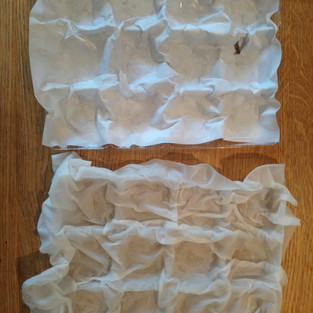Exercise 2.2 Paper manipulation library
- Juliet
- Dec 7, 2018
- 1 min read
Here the focus in on developing some of the qualities found in the selected drawings by translating them into paper manipulations.
Here are the techniques that I feel are most relevant to my selected drawings:

I started off with a variety of new and used papers: graph paper, reused envelopes, brown paper, lined paper, tissue paper, tracing paper, greaseproof paper, plain white paper:

The chosen papers represent these qualities of my drawings:
brown paper - roughness of frayed rope drawing
graph paper - geometric boxes
selection of more transparent papers - delicacy of finer drawings and lace-like elements
plain white paper - the neutral starting point of many of the drawings.
Folding to create the graphical drawn boxes on reused tissue-like packing paper:
Experimenting with folding and snipping to create raised areas, looking at them flat and as 3D shape:
Learn that the same material can look very different when held in a 3D shape, in this case a cylinder.
Folding, cutting, snipping, rolling back, using reused heavy brown packing paper:
Pleating with tracing paper and copy paper:
Snipping, folding, stretching:
Wetting, moulding, drying to create a grid:
Puncturing, twisting , crumpling, layering, coating, laminating with glue:
This exercise has highlighted for me some of the possibilities that exist to partially or completely transform a material; leading to breaking it down, building it up, combining the qualities of two or more different materials to make a new one, making it stronger or weaker, giving body or shape to a 2D or flat surface, creating new areas in which to insert stitch, destroying part of the surface in order to recreate it in a new way.






































































Comments